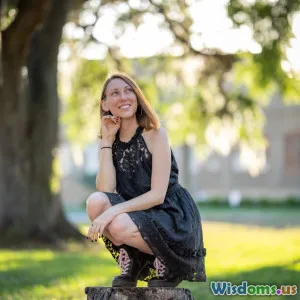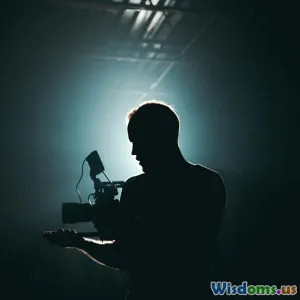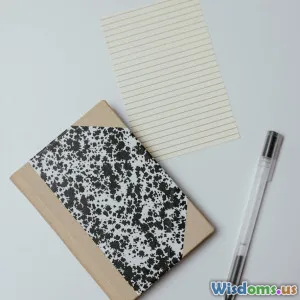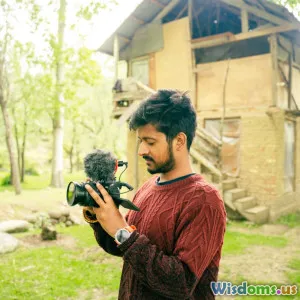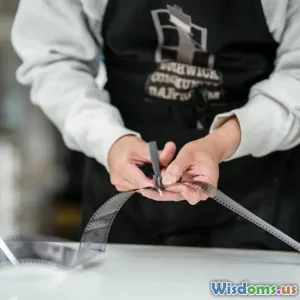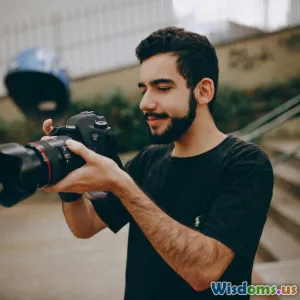
Mastering Bokeh: Essential Lens Techniques for Portrait Perfection
9 min read Unlock stunning portrait photos with expert bokeh techniques that transform background blur into an art form. (0 Reviews)
Mastering Bokeh: Essential Lens Techniques for Portrait Perfection
Portrait photography is much more than capturing a person’s likeness—it’s a dance between light, lens, and moment. One of the most captivating ways photographers elevate portraits to an art form is by mastering bokeh, the aesthetically pleasing blur in the background that highlights the subject and adds depth. But what makes bokeh so magical, and how can you harness it to craft stunning portraits? This guide takes you through essential lens techniques and actionable tips to master bokeh for portrait perfection.
What is Bokeh and Why Does it Matter in Portraits?
Bokeh derives from the Japanese word “boke,” meaning blur or haze. It describes the quality of out-of-focus areas in an image, particularly how the lens renders these blurred backgrounds. Unlike mere blur, which can be distracting or unappealing, bokeh is intentional and enhances the visual storytelling by isolating the subject, thereby directing viewer attention.
In portrait photography, good bokeh ensures the subject’s eyes and facial features remain razor-sharp while the background melts into a creamy, smooth ambiance. This soft separation not only creates an emotional depth but also reduces distractions such as cluttered environments.
Key Lens Factors Impacting Bokeh Quality
1. Aperture Size and Shape
The aperture controls how much light enters the lens and directly influences depth of field (DoF). A wide aperture (low f-number such as f/1.2 to f/2.8) produces a shallow DoF, creating stronger bokeh effects that blur the background beautifully. For example, the legendary Canon EF 85mm f/1.2L II USM lens is prized for its ultra-wide aperture that delivers smooth bokeh, making it favored by portrait pros.
Interestingly, the shape of the aperture blades alters the appearance of bokeh. Lenses with more circular aperture blades will produce softer, more rounded highlights in the background, whereas blades with straight edges may create geometric, sometimes harsher, bokeh highlights.
2. Focal Length and Compression
Longer focal length lenses (such as 85mm, 100mm, 135mm) help compress the background and enhance bokeh by making the out-of-focus regions appear more distant and diffused. A portrait shot taken with a 135mm f/2 lens will typically have creamier bokeh than one with a standard 50mm lens at the same aperture because of the greater subject-to-background separation.
3. Lens Optics and Construction
High-quality prime lenses often outperform zooms in bokeh quality due to superior glass elements and fewer compromises in design. Specialty lenses like the Sony FE 85mm f/1.4 GM have coatings and optical formulas engineered to minimize ghosting and maximize smooth bokeh.
Practical Techniques for Capturing Stunning Bokeh Portraits
Choose the Right Lens and Aperture
While high-end, fast prime lenses deliver the best bokeh, budget-friendly options like the 50mm f/1.8 “nifty fifty” are excellent entry points. Use the widest aperture available to you to maximize subject isolation. For example, a portrait shot at f/1.8 at 50mm on a crop sensor camera can imitate the separation of a longer focal length lens.
Control Your Subject-to-Background Distance
Distance is a critical yet often overlooked ingredient. The farther the background is from your subject, the more out of focus it becomes, enhancing bokeh’s smoothness. Position your subject several meters in front of the background. For instance, shooting a model outdoors with foliage 10+ meters behind them gives deeper, more aesthetic background blur compared to a wall just a few feet back.
Use Background Elements Wisely
Bokeh can transform standard light into glowing orbs, especially with point light sources such as street lamps, fairy lights, or sun filtering through trees. Incorporating such elements enhances bokeh effects and injects visual intrigue. A well-known example is the iconic “golden hour bokeh” where warm sunlight hitting dew drops creates sparkling highlights.
Master Manual Focus and Camera Settings
Achieving precise focus on the eyes when using wide apertures and shallow DoF is crucial—otherwise, the desired sharpness vanishes. Use single-point autofocus and focus on the closest eye, or switch to manual focus for control. Also, shoot in aperture priority or manual mode to maintain your preferred aperture setting.
Experiment with Lens Accessories
Lens hood designs can influence chromatic aberration and flare, affecting bokeh quality. Moreover, some photographers experiment with filters like Neutral Density (ND) filters to shoot with wide apertures in bright light, preserving creamy bokeh without overexposure.
Understanding Bokeh Styles: Circular, Swirly, and Hexagonal
Different lenses produce distinct bokeh signatures that flavor your portraits uniquely:
- Circular Bokeh: Produced by rounded aperture blades, characterized by soft, uniform circles. Favored in classic portraiture.
- Swirly Bokeh: Lens designs like the Helios 44-2 58mm f/2 can induce a whirling swirl around the subject, creating a dynamic, cinematic look.
- Hexagonal/Polygonal Bokeh: Resulting from aperture blades with fewer, straighter edges. Can create harsher-looking blur spots, sometimes stylistic if desired.
Understanding your lens's bokeh pattern helps you predict and creatively use background blur for artistic intent.
Real-World Insights: Advice from Renowned Portrait Photographers
Jimmy Chin, National Geographic Photographer:
"Bokeh isn’t just background blur; it frames the narrative of a portrait. When I shoot stories in the wild, my lens choice and aperture determine the intimacy level I communicate through bokeh."
Sue Bryce, Portrait Artist:
"For emotional portraits, fabricating space behind the subject with creamy bokeh provides breathing room in your image. It’s as much visual storytelling as lighting."
Their testimonials highlight that mastering bokeh is both technique and storytelling craft.
Conclusion: Elevate Your Portraiture Through Intentional Bokeh
Mastering bokeh is a powerful step toward portrait perfection—combining an understanding of lens physics, optical choices, and artistic vision. Remember, it’s not just about making the background blurry, but about how that blur supports your subject’s emotion and presence.
By choosing the right lens, controlling aperture, positioning subject and background strategically, and paying attention to your surroundings, you unlock creative possibilities that transform everyday snapshots into compelling portraits. Dive into bokeh experimentation, adapt these techniques, and your portraits will radiate a new dimension of depth and beauty.
Further Reading and Resources
- "Understanding Bokeh & Depth of Field" – Digital Photography School
- "Lens Geometry and Aperture Blade Shape" – Cambridge in Colour
- "Portrait Photography Tips and Techniques" – CreativeLive Courses
Embrace the subtle art of bokeh, and watch your portraits shine like never before.
Rate the Post
User Reviews
Other posts in Portrait Photography
Popular Posts










